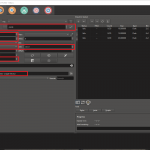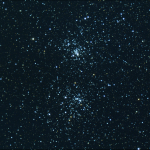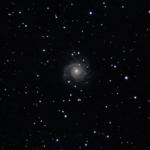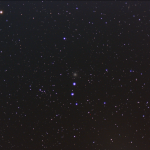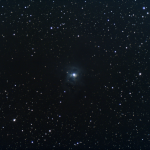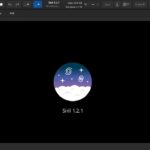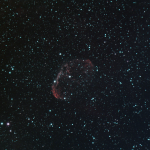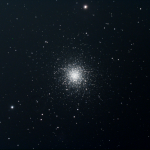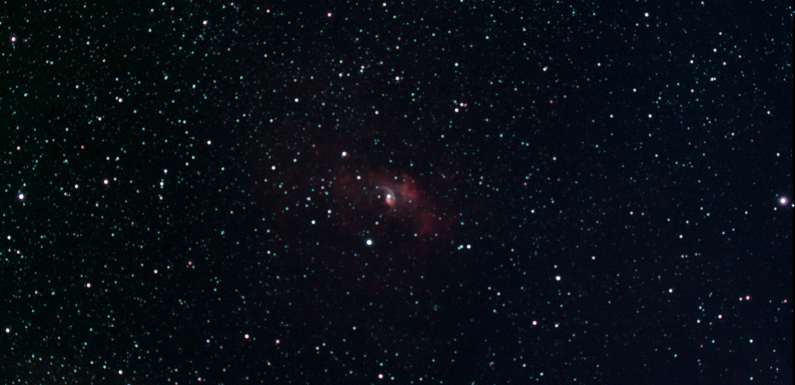
Clear with temperatures in the mid/low 60s. A very nice night, other than the bright 89% waxing Moon. Still it has been a while so it was good to collect some light through the scope. My plan for the night was to give the ZWO Duo-band Filter another try and to test out broadcasting my EAA session on the Night Skies Network.
I set the scope up in the early afternoon. Got everything cabled up, leveled, and pretty well balanced. I shot a set of darks and created a master dark using SharpCap. Once the Sun set I ran the Ekos polar alignment, I was abled to get it dialed in nicely. I put the Duo-Band filter into the filter drawer and ran the Ekos Auto-Focus. I started up the broadcast on the Night Skies Network and away we went…
Plate solving was calculating the focal length at 700.6mm (F/7) and the first autofocus run set the steps to 6490. I ran the Ekos Autofocus routine again after shooting the Bubble Nebula and focus was at 6590 steps.
The EAA images in this post were capture with my ZWO ASI294MC Pro cooled to -10 C through my SVBONY SV503 102ED Scope with a UA adjustable field flattener and the ZWO Duo-band Filter. The SV503 is focused using a ZWO EAF and the Ekos Focus Module. Guiding is accomplished with an Orion Starshoot Autoguider (OSSAG) attached to a SV106 60mm guide scope. All gear is mounted on a Sky Watcher EQ6-R Pro. The mount and cameras are remotely controlled with KStars/Ekos via an INDI Server running on a Libre SBC. The images were live stacked using SharpCap Pro. Images have been resized (80% of original) and/or cropped for file size but otherwise appear just as I observed them.
NGC 7635, the Bubble Nebula, in the constellation of Cassiopeia. This is a SharpCap live stack of 15 x 2 minutes at 121 gain, 8 offset, and bin 2×2.
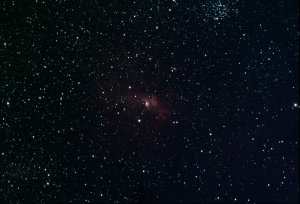
I can really see the bubble and a bit of details in the nebula surrounding it. The focus is a little soft, after this capture sequence I ran the Ekos Auto Focus again and was able to get better focus.
NGC 7380, the Wizard Nebula, in the constellation of Cepheus. This is a SharpCap live stack of 16 x 2 minutes at 121 gain, 8 offset, and bin 2×2.
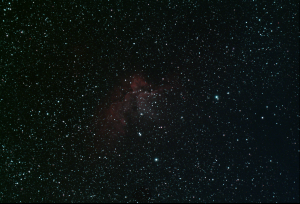
After the first frame I started to get exposure timeouts on my camera, so I ended up having to reset the camera and INDI Server. With the camera reset I had to cool down the camera again, I did not wait for it to cool down all the way, so there are a few hot pixels which the darks did not get, but the Wizard is still there. The ZWO Duo-band Filter really helped bring out so details of this nebula in a very short period of time.
IC 63, the Ghost of Cassiopeia, and IC 59 in the constellation of Cassiopeia. This is a SharpCap live stack of 14 x 2 minutes at 121 gain, 8 offset, and bin 2×2.
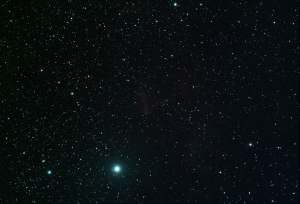
During the live stack the Ghost (IC 63) was visible early on, IC 59 (off to the right of the bright star) took a bit longer to resolve. In this stack it is a bit more difficult to see than it was during the live stack. Still pretty decent for only 28 minutes of captures on these dim nebula. Why 28 and not 30? Well the final frame was an exposure time out… when that happened instead of resetting everything again I decided to call it a night.
My total EAA observing session was about 2 1/2 hours and during this time I was broadcasting on the Night Skies Network. Talked to several folks from all over the place during my session. If I am observing EAA, I will probably also be broadcasting on Night Skies Network.
I packed up and covered the scope at around 10:15 PM. A short night, but a fun night.
I plan to tinker with these in Siril a bit to see if I can bring out a few more details of these objects… but that will be for another post.

